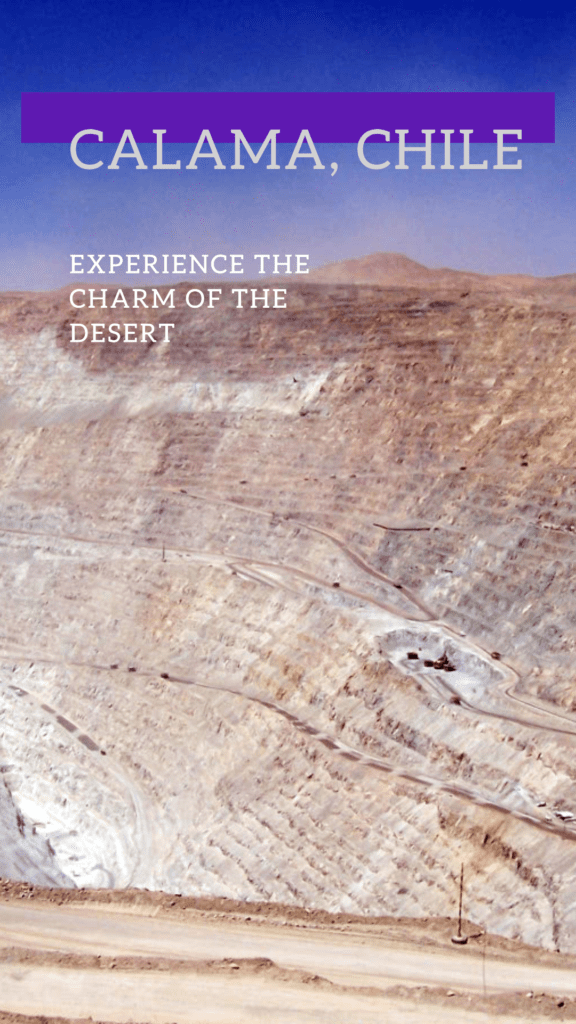Calama
Calama is a city in the northern stretches of Chile’s Atacama Desert. Calama holds the distinction of being the capital of El Loa Province, a constituent part of the larger Antofagasta Region.
This arid region is one of the driest urban centres globally, with a meagre average annual precipitation of a mere 5 millimetres. Meandering through the city, the River Loa, which ranks as Chile’s longest, adds a vital touch of water to the landscape.
In 2003, the nearby town of Chuquicamata, once the world’s largest open-pit copper mine, was dismantled due to environmental concerns and the mine’s expansion encroachment. Consequently, Chuquicamata’s residents relocated to Calama, seeking housing independently after departing from company-owned residences.
Near Calama lies the world’s largest copper mine, alongside intriguing archaeological sites. Copper’s influence permeates the area, manifesting in copper statues, wall etchings, reliefs, and even a copper-plated spire adorning the cathedral.
In 2004, Calama also became the new home for an influx of residents from the contaminated mining town of Chuquicamata, marking a significant migration of individuals impacted by the copper industry.
Geography
Calama is a city located in northern Chile, specifically in the Antofagasta Region. Calama is surrounded by the arid and inhospitable Atacama Desert, known for its extremely dry conditions and unique desert landscapes. The city itself experiences a desert climate with little to no rainfall.
Calama is situated at a relatively high altitude, with an elevation of around 2,400 meters (7,874 feet) above sea level. This higher elevation contributes to cooler temperatures compared to coastal regions in Chile.
The city is relatively close to the Andes Mountains, which form a natural boundary to the east. The mountains in this region are known for their stunning and rugged landscapes.
Calama experiences a desert climate with hot and dry summers and mild winters. Rainfall is extremely scarce, and the region is known for its clear skies, making it an ideal location for stargazing and astronomical research.
In addition to the mining operations, Calama is known for its proximity to notable landmarks and attractions, including the Atacama Large Millimeter/Submillimeter Array (ALMA), an astronomical observatory located at high elevation in the Atacama Desert.
Demographics
In 2021, Calama was home to approximately 180,000 to 190,000 residents. It’s worth noting that the city’s population could have experienced fluctuations since that time, influenced by variables such as migration, urban expansion, and economic dynamics.
The population of Calama is ethnically diverse, with a mix of people of Indigenous, European, and other ethnic backgrounds. Indigenous groups in the region include the Aymara and Atacameño communities.
The majority of residents in Calama, like in the rest of Chile, are Christian, with Catholicism being the dominant religion. However, there is also religious diversity, and other Christian denominations and non-religious groups are present.
Due to the proximity of major mining operations, Calama has experienced both internal and external migration. Some residents have moved to the city for work opportunities in the mining industry, while others may have migrated from nearby areas or other countries.


